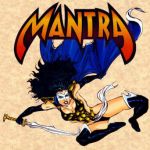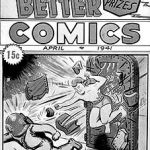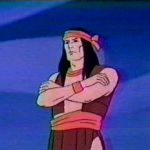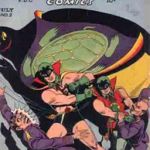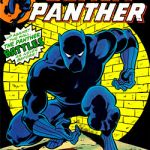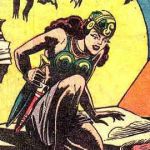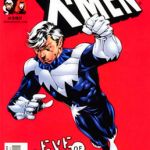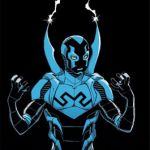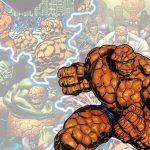Most superheroes and other main characters in comic books are straight, white men (albeit often with superhuman powers or abilities). Since the very first comic books in the 1930s, minority characters were generally cast as villains, or caricatures with stereotypical traits. But even in the beginning of the industry there were a few minority characters that were cast as both heroic and dignified. These are a few of the notable breakthrough comics characters in history.
Use your arrow keys or the navigation below to scroll through the photos.
- Madam Fatal, aka Richard Stanton, was the first cross-dressing comic book hero. He was not a superhero — he possessed no otherworldly or superhuman powers. He was simply exceptionally bright, athletic, and driven by a thirst for justice. His modus operandi was to dress as an elderly woman, thereby catching the bad guys unawares and quickly subduing them with his strength, speed, and reflexes. Madam Fatal first appeared in 1940, but has reappeared and been mentioned in other comics for decades. (Red Tornado, a woman who dressed as a man to fight crime, appeared later the same year.)
- The first transgender superhero was Mantra, who first appeared in Malibu Comics’s Ultraverse series in 1993. Creator Mike Barr explained on a collector card: “Mantra is a man, he just has a woman’s body. It was from this dichotomy that Mantra sprang. From the major theme — a switch in genders — came the minor theme of the series: a warrior who must become a sorcerer, a slayer who must become a nurturing mother, a man who has died hundreds of times must become a woman who can only die once. That’s the conundrum — and appeal — of Mantra.”
- Not to be confused with the American Iron Man, the original Iron Man dates back to 1941 and is believed to be the first Canadian superhero committed to print. He was the last surviving member of a race of people who lived in the South Seas. After his people were killed in an earthquake, he lived alone in an underwater palace. World War II propelled him out of his grief and isolation as he joined the Allied cause against the Nazis. Iron Man was the first Canadian superhero to appear after wartime shortages caused a ban on the import of U.S. comics in December 1940, according to the International Catalog of Superheroes. (Sorry Captain Canuck fans.)
- Not the first Native American superhero, but arguably the most prominent (albeit still pretty stereotypical). Created by Hanna-Barbera in the early 1970s and part of the Super Friends cartoon franchise, Apache Chief had the ability to grow extremely large or shrink on a whim. Other Native superheroes that debuted in this era include Warpath (X-Force), Red Wolf (Avengers), and Danielle Moonstar (X-Men).
- Chinese American artist Chu Hing created the Green Turtle, the first Asian comic book hero, for Blazing Comics during World War II. “Armed only with his wits, combats skills, a remarkable light aircraft (the Turtle Plane,) and a mystic jade dagger, he and Burma Boy, a youngster he saved from the Japanese, flew across Asia battling the Imperial Japanese Army,” according to ComicVine. (Caveat: The depiction of the Japanese in these comics is over-the-top Asian caricature of the worst kind.) Some may argue that Shang Chi was the more relevant Asian breakthrough character — he debuted in 1973 for Marvel — but Shang Chi was a stereotypical martial arts master without discernible magical powers.
- In 1966, Marvel Comics debuted Black Panther, whose alter ego was an African king named T’Challa. He was the first black character in mainstream American comics who had superpowers. He appeared in the Fantastic Four series and later with The Avengers. In a series starring Black Panther called Jungle Action, one story arc is entitled Panther vs. the Klan.
- Fantomah, an Egyptian goddess with transformative powers, is widely regarded as the first female superhero in comic books. She made her debut in the golden age of comic books, way back in 1940. She was a minor character, however; Wonder Woman, who debuted in 1941, was the first primary superheroine.
- Until 1989, the Comic Code Authority in the United States strictly forbade comic publishers from mentioning homosexuality. While there were hundreds of wink-wink subtexts in comics dating back to the golden age, the big publishers — DC Comics and Marvel Comics — had no explicitly gay characters until much later. In fact under Marvel Publisher Jim Shooter, there was an explicit ban on gay characters in Marvel comics. The character Northstar was revealed to be gay in 1992 while a member of Alpha Flight; he later joined the X-Men.
- While not the very first Latino hero in comics, Blue Beetle (aka Jamie Reyes) is definitely the first to get such prominent billing. His storyline began in 2006, when a blue scarab beetle fused itself to Reyes’s spine. The beetle can activate the hero’s armor, and seems to grant him superhuman strength and vision, as well as the ability to fly.
- Fantastic Four hulk The Thing, aka Ben Grimm, was the first comic book superhero to reveal that he is Jewish. The Thing also holds the comic book distinction of being the only hero ever to be brought back to life not by science, magic, or alien powers or technologies, but by the hand of God.


